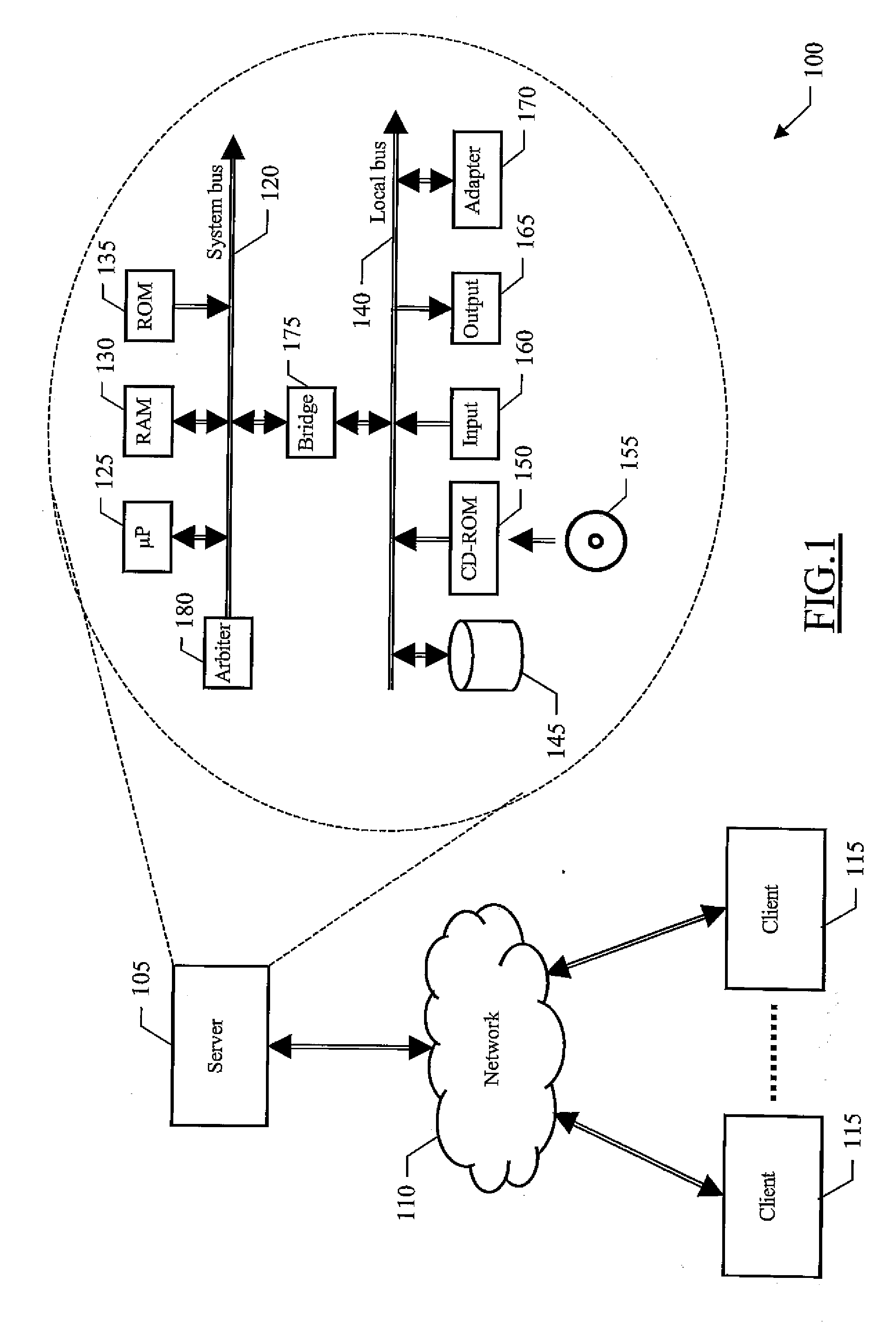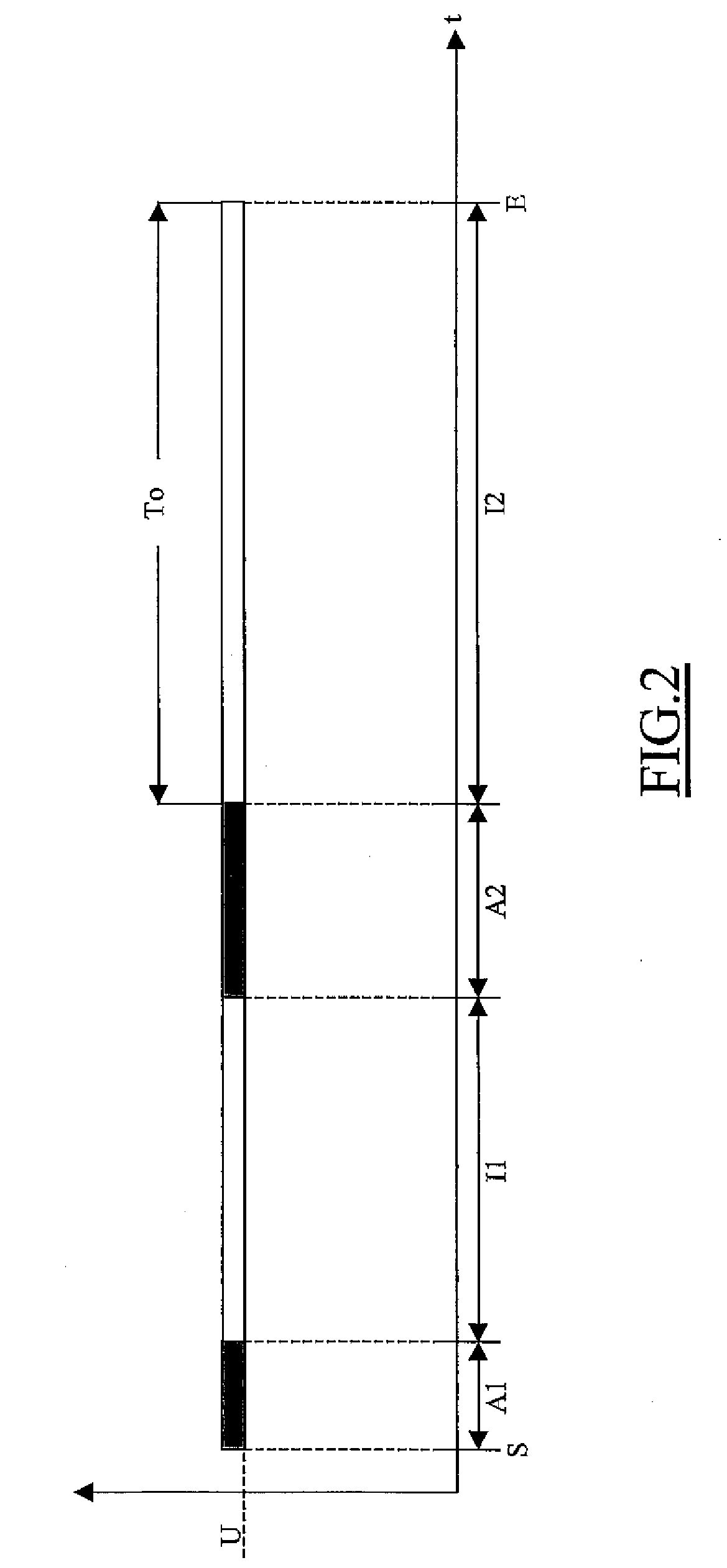Accessing shared resources with improved request peak management
a shared resource and request peak technology, applied in the field of data processing, can solve the problems of limiting the availability of the server, limiting the intrinsically limited, and unable to grant further access to the server
- Summary
- Abstract
- Description
- Claims
- Application Information
AI Technical Summary
Benefits of technology
Problems solved by technology
Method used
Image
Examples
Embodiment Construction
[0024]With reference in particular to FIG. 1, a distributed data processing system 100 is illustrated. The system 100 has a client / server architecture, typically based on the Internet. The Internet consists of millions of servers 105 (only one shown in FIG. 1), which are interconnected through a global communication network 110. Each server 105 offers one or more services. For example, in DAM applications the server 105 supports the acquisition, storage, and retrieval of digital assets; a digital asset is any artifact encoded in binary form, and includes any form of content (such as photographs, videos, music, and the like) together with the corresponding right to use them. Users of client computers 115 access the server 105 (e.g., via access providers for the Internet) in order to exploit an offered service.
[0025]Particularly, the server 105 comprises a computer that is formed by several units that are connected in parallel to a system bus 120. In detail, one or more microprocessor...
PUM
 Login to View More
Login to View More Abstract
Description
Claims
Application Information
 Login to View More
Login to View More - R&D
- Intellectual Property
- Life Sciences
- Materials
- Tech Scout
- Unparalleled Data Quality
- Higher Quality Content
- 60% Fewer Hallucinations
Browse by: Latest US Patents, China's latest patents, Technical Efficacy Thesaurus, Application Domain, Technology Topic, Popular Technical Reports.
© 2025 PatSnap. All rights reserved.Legal|Privacy policy|Modern Slavery Act Transparency Statement|Sitemap|About US| Contact US: help@patsnap.com



